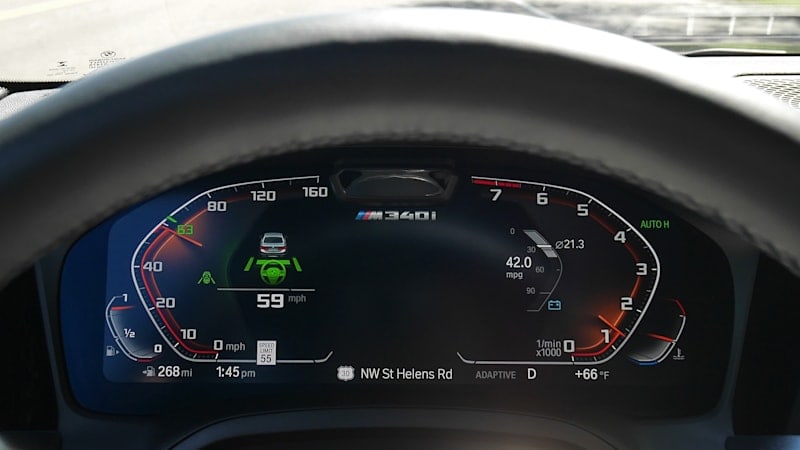Adaptive cruise control users are more likely to speed, IIHS study claims

A new study from the IIHS claims that those who use adaptive cruise control tend to speed more than those not using it.
To analyze how folks drive with adaptive cruise control, the IIHS provided a 2016 Land Rover Range Rover Evoque and 2017 Volvo S90 to 40 different drivers in the Boston area four weeks at a time. Both had adaptive cruise control systems equipped. The drivers racked up about 20,000 miles total.
In the end, drivers with adaptive cruise on were 24% more likely to be speeding on highways than those with the systems turned off. The definition of “speeding” used here is any amount over the posted speed limit. In addition to more time spent over the speed limit, drivers who used adaptive cruise control sped to a greater degree than those not using it. It was only a 0.9 mph difference — 6.1 mph over versus 7.0 mph on average — but enough to stand out in the study, and enough, says the IIHS, to equal a meaningful increase in the likelihood of crashes, injuries and fatalities.
However, the IIHS also points to previous data that showed using systems like adaptive cruise control and lane-keeping assist decrease the likelihood of a crash. Whether the higher speeds offset the safety blanket that these systems provide is yet to be determined.
The IIHS didn’t come to any steadfast conclusions as to why people speed more when using adaptive cruise control, but there are some educated guesses. For one, both of the cars used in the study allow folks to adjust their speed by 5-mph increments. This could encourage someone to theoretically set their speed at 75 mph or 80 mph in a 70 mph zone — the study found clusters of speeding behavior centered around these 5-mph increments. Meanwhile, someone taking manual control of the speed is likely to oscillate somewhere in between 70 mph and 80 mph as they motor along.
This study also discussed the possibility of curbing adaptive cruise control velocities by limiting what speeds to which the system could be set. For example, a vehicle could make the system max out its adaptive cruise speed capabilities at the posted speed limit. The study (and we agree) suggests that folks would simply not use the system if it locks them out from speeding, ultimately accomplishing nothing.
Many folks use adaptive cruise to keep pace with traffic in heavy commutes, too. If you don’t set the target speed high enough, you won’t keep up with the car in front as traffic accelerates and decelerates. It’s a tricky balance, but one that could encourage higher speeds.
There aren’t many actionable conclusions from this study, but it is a conversation starter. Using systems marketed as “safety systems” as a tool for speeding is something worth talking about, and will likely be a topic of studies to come.
Related Video:







